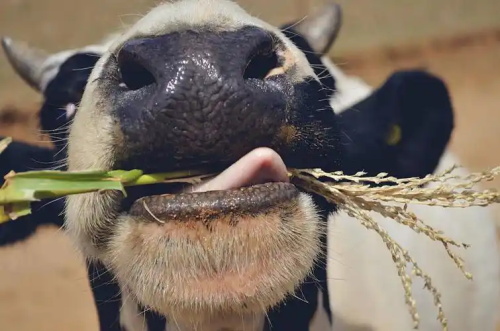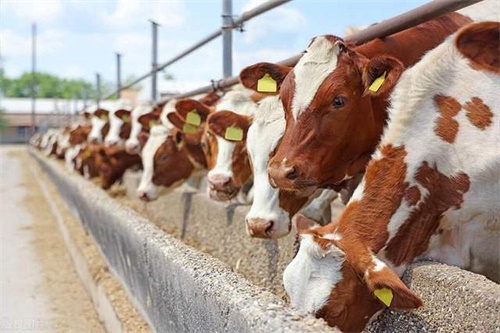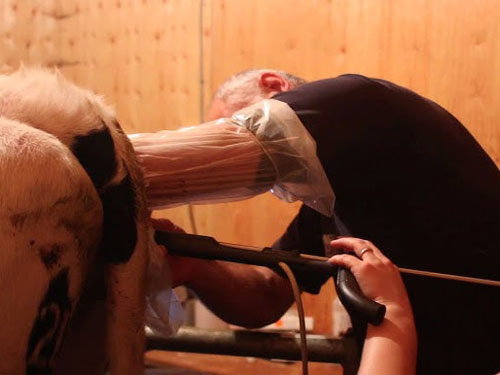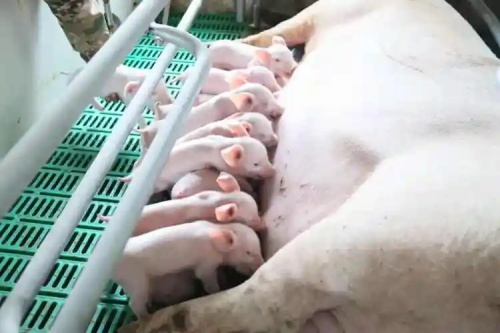How Do Nutritional Deficiencies Affect Cow Fertility?
Nutrition isn’t just about milk yield or weight gain — it’s the foundation of reproductive success. When cows lack the right balance of energy, protein, minerals and vitamins, the reproductive system is one of the first to suffer. Deficiencies show up as silent heats, delayed return to estrus, poor conception rates, and higher early embryonic loss. Farmers often notice these problems months after the diet went wrong, because reproduction lags behind short-term production measures. This article dives into the specific nutrients that matter, how shortages disrupt hormone cycles and uterine environment, and practical steps farmers can take to spot and fix these problems before they cost the herd fertility and the farm money.

Energy balance and why negative energy wrecks fertility
The single biggest feed-related driver of poor fertility is negative energy balance (NEB) in the transition and early lactation period. When cows are producing lots of milk but not consuming enough energy, the body mobilizes fat. That sounds normal, but the metabolic stress that follows suppresses GnRH and LH pulses, delays first ovulation, and lowers oocyte quality. In plain terms: the cow’s body chooses survival and milk, and reproduction takes a back seat. Clinically you’ll see delayed first ovulation, weaker estrus expression, more days open, and lower conception at first service. Fixing NEB isn’t a one-off — it’s about ration formulation (digestible starch, bypass fat), feed delivery (frequency, palatability), and managing body condition so cows calve in a BCS range that minimizes peak deficit.
Protein: not “more” but “right” protein
Protein impacts fertility through two routes: rumen function and amino-acid supply to the cow. Too little crude protein (CP) limits follicle development and hormone synthesis; too much rumen-degradable protein raises blood urea nitrogen (BUN), which can alter uterine pH and harm embryo survival. The practical takeaway is balance: formulate rations that meet metabolizable protein needs and match rumen-degradable protein to fermentable energy. For high-producing cows, include bypass (rumen-undegradable) protein sources so the cow gets amino acids without spiking rumen ammonia. Regular forage testing and working with a nutritionist to adjust CP and degradability will reduce failed breedings and make inseminations more likely to stick.
Macro-minerals: calcium, phosphorus and magnesium matter more than people think
Macro-minerals influence muscle function, immune response and uterine recovery. Low calcium at calving leads to slower uterine contractions and higher retained placenta rates, which then predispose cows to uterine infection — a direct hit to fertility. Phosphorus deficiency reduces feed intake and estrus expression; magnesium deficiency ties into milk fever and nervous stress, worsening postpartum recovery. These are not obscure problems: poor forages, especially in certain seasons, commonly lack balanced Ca:P ratios and magnesium. The fix is straightforward: test forages, use phase-specific mineral mixes (dry, close-up, lactating), and ensure free-choice mineral access. Titrate supplementation to avoid excesses that can antagonize other minerals (e.g., too much sulfur limiting copper).
Trace elements and vitamins: the invisible fertility levers
Trace minerals (Se, Zn, Cu, Mn) and vitamins (A, E, D) are tiny in quantity but huge in effect. Selenium and vitamin E boost immune response and lower retained placentas and metritis; zinc influences ovarian function and sperm transport; copper supports ovarian steroidogenesis; manganese is needed for estrous cyclicity. Deficiencies often present as higher postpartum infections, weak heats, and poorer conception. Diagnosis should rely on herd-level history, tissue/serum tests when indicated, and trace-mineral programs tailored to regional soil profiles. Modes of delivery—oral bolus, injectable trace minerals, or consistent premix in TMR—depend on herd size and risk profile. Timely trace mineral support in the dry and close-up period gives the best reproductive return.

Fatty acids, body condition and oocyte quality
Fatty acid profile in the diet — particularly omega-3 and omega-6 balance — affects inflammation, oocyte quality and embryo development. Supplementing protected fish oil or specific protected fats around breeding has shown reproductive benefits in many herds by improving conception and embryo survival. Meanwhile, body condition interacts with fat metabolism: over-conditioned cows have insulin resistance and poorer follicle development; under-conditioned cows lack energy for ovulation. Use BCS monitoring at dry-off, calving and breeding to guide supplementation and prevent extremes that degrade oocyte and uterine environment quality.
Toxins, mycotoxins and rumen health — the hidden sabotage
Nutritional “deficiency” isn’t always about missing nutrients — sometimes it’s about contaminants and poor rumen health. Mycotoxins in moldy feed blunt immune responses, depress appetite and directly impair embryo survival. Subclinical acidosis from high grain or poorly mixed rations disrupts rumen microbes, reducing microbial protein and increasing systemic inflammation — both bad for reproduction. Regular feed testing, proper storage, feeding buffers when needed, and including binders or mycotoxin mitigators where risk exists will protect fertility. Don’t overlook water quality and parasite loads; both influence feed efficiency and can indirectly create a nutritional deficit at the tissue level.
Practical monitoring: tests, schedules and red flags
Detecting nutrition-driven fertility problems requires data. Key tools: regular BCS scoring (monthly for transition cows), milk and blood metabolic panels (NEFA, BHB, glucose, BUN), forage testing every cut, and targeted mineral panels. A typical routine: test forages quarterly, BCS at dry-off/calving/breeding, screen high-risk cows for NEB indicators in the first three weeks postpartum, and run milk progesterone or early ultrasound on repeat-breeders. Red flags include clusters of repeat-breeders, increased early embryonic loss, spikes in retained placenta or metritis, and seasonal drops in conception that align with feed changes. Use these signals as triggers for nutritional audit rather than waiting for blanket interventions.
Cost/benefit and implementation roadmap
Fixing nutrition problems costs money up front but pays back quickly in improved conception rates, fewer services per pregnancy, shorter calving intervals, and more lifetime milk/calf income per cow. A focused implementation plan looks like this: 1) baseline audit (forage tests, BCS, recent reproductive performance), 2) immediate fixes for obvious deficits (mineral boluses, correct energy during close-up), 3) mid-term ration reformulation with a nutritionist (balance RDP/RUP, adjust starch and effective fiber), and 4) monitoring and feedback (BCS, blood tests, pregnancy rates). Track key metrics (days to first service, conception rate at first service, days open) monthly — improvements here show ROI within one lactation in many herds.
Conclusion
Nutritional deficiencies are a frequent, fixable root cause of reduced fertility. They work through clear pathways — energy deficit suppresses hormones, protein imbalance disrupts uterine conditions, mineral and vitamin shortfalls undermine immunity and uterine repair, and toxins or rumen dysfunction silently limit nutrient availability. The practical response is data-driven: test forages, monitor body condition, use targeted mineral and fatty-acid programs, and prioritize the transition cow. With timely, targeted nutritional management you can turn a hidden fertility loss into measurable reproductive recovery — fewer repeat breedings, shorter intervals, and stronger herd performance.
| Deficiency / Problem | Reproductive Consequence | Practical Fix |
|---|---|---|
| Negative energy balance | Delayed ovulation, reduced oocyte quality, longer days open | Increase digestible energy, add protected fats, improve feed access |
| Protein imbalance | Poor follicle growth or high BUN harming embryo survival | Balance RDP/RUP, test forages, adjust concentrates |
| Se, Zn, Cu deficiency | Higher retained placenta, metritis, poor conception | Targeted supplementation in dry period; use injectables if herd-level deficits |
| Vitamins A & E low | Poor uterine tissue repair, lower calf vigor | Ensure premix adequacy, consider injections pre-calving |
| Mycotoxins / rumen acidosis | Lower feed intake, immune suppression, embryo loss | Improve storage, test feeds, use binders and buffers |





